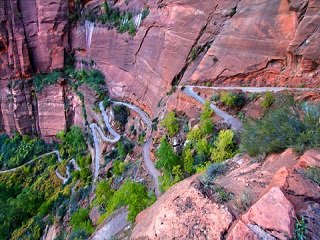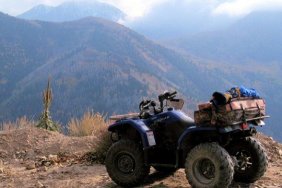 Welcome to Day One of a month of articles exploring the vital practice known as Leave No Trace. Experienced outdoorsmen will be familiar with this concept, which aims to reduce long-lasting effects on the ecosystem, but there are many who may not know how to physically employ it during their travels in the wilderness. Today we’ll take a look at how switchbacks are important in ensuring that hikers leave no trace in the backcountry.
Welcome to Day One of a month of articles exploring the vital practice known as Leave No Trace. Experienced outdoorsmen will be familiar with this concept, which aims to reduce long-lasting effects on the ecosystem, but there are many who may not know how to physically employ it during their travels in the wilderness. Today we’ll take a look at how switchbacks are important in ensuring that hikers leave no trace in the backcountry.
For those who may be unfamiliar with the term, a switchback is a trail on a steep hill or mountain that runs in a zig-zag pattern, rather than a straight line. Trails that run straight up and down steep hills will become damaged over time. Erosion from rainfall turns trails into gullies as the water moves faster down straight lines, causing the soil and vegetation to wash away and hollowing out the trail.
The zig-zag pattern that a switchback utilizes actually protects the hill and the trail because they help keep the trail at a consistent gradient. They’re also great because they make it easier to climb steep hills.
While switchbacks are designed to prevent erosion, it’s still up to us to do our part by sticking to the trail and refraining from short-cutting. Short-cutting a switchback kills vegetation between the trail and loosens the soil. Furthermore, consistent short-cutting ultimately creates a new trail straight up and down the hill, which will in time get large and hollowed out from erosion.
Trail planners and outdoors enthusiasts alike go through great pains to protect our natural wonders by implementing helpful designs like switchbacks, but we still need to go that extra mile and support them. Doing our part to keep the trails beautiful and control erosion will ensure that the ecosystem is preserved for generations. When you hit the woods, be sure to walk softly and stay on the designated trail.







